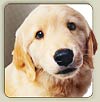Puppy's First Day Home
Adding a new member to the family is always a major step in our lives and when it happens to be a warm, lovely puppy it can be incredibly satisfying. You have a being that will now be in your care for many years and starting off that relationship on the right track will make everyone’s lives better and nourishing in the years ahead.

Preparing to bring a puppy into your home starts before he or she even arrives. Take a look around your house and think like a curious puppy and if possible, crawl around at their level and start looking around. Find anything that’s loose or that they could bite, eat or pick up with their mouths. It’s a good idea to get outlet covers and where possible tie up electrical cords so they aren’t dangling or lying around on the floors where they could be chewed.
Just as you would with a toddler in the house, it’s also helpful to install cabinet door latches that make it difficult for babies and puppies to nudge open a cabinet door and gain access to household cleaners or other dangerous items. If it’s around the holidays it’s also critical to make sure plants that are poisonous to our companions are well out of reach or removed from the home – these include pointsettia plants and mistletoe that can be fatal for dogs if ingested. Also, some Christmas tree ornaments (transparent ones with liquid inside) are sometimes filled with a toxic chemical.
A trip to the pet supply store or buying necessary items on-line for your puppy is also important. Some of the items you will need to have include:
- Collar – Over the course of the lifetime of your companion, you will end up buying several of them as they grow. To start with, be sure to get one that is perfect for puppies. It’s recommended that when fashioned around the neck that it not be very tight, but rather be able to pull away from the neck about a finger or two’s width. “Choke collars” – the kind that tighten when pulled by a leash should NEVER be used for constant-wear collars. They can get caught on fences, rods or other items that can tighten the collar when your companion tries to unhook it, causing them to be strangled and possibly die. Almost every municipality requires dogs to be licensed so a collar with a sturdy ring on it to attach these “tags” is important as well as one to attach a leash. You will also find other styles of collars used for training or obedience that should be used in conjunction with their everyday collar.
- Crate or Pen – Just like many of us humans, our new companion will need its “space.” Whether it’s a crate, a pen or even a blanket or dog bed, it’s important to set up a spot within your home that will become your puppy’s home within your home. Debates over using crates or pens to train your dogs is worthy of it’s own article, but for many breeds a crate allows dogs to use it as their den. Many dogs feel comfortable and safe in a place they can use as their sanctuary. If this is your first dog, it’s important to read all you can about their care and use your best judgment on how best to establish this area for them. One thing you’ll learn is that a crate can be an extremely important tool for housetraining. For many dogs, having an old blanket folded up in a corner may be the perfect resting location – for others, a full crate may be just what they need to create their space.
- Leash – Sometimes it may seem like there are as many leashes as there are stars in the sky. From leather to nylon to retractable, there are styles and brands to appeal to just about anyone. The choice of leash is entirely up to you and your preferences. When choosing a leash, be sure it’s sturdy, the clasps are strong and that it can handle the weight of your dog in case they decide to take off so you can keep them in control in any situation.
- Feeding Dishes – Depending on the size of your companion’s breed, you will probably have to gradually provide bigger and bigger bowls or containers to hold their food and water. Using large bowls when the puppy first arrives is not a good idea because they are obviously smaller and for the most part clumsy. If they have to step up or into a bowl to reach their food or water, they may get discouraged and avoid eating or drinking. This may also lead to spilled food and water, which is frustrating for everyone involved. As our companions get bigger, you may want to find bowls or containers that are raised off of the floor surface – this helps place the dog’s neck at a better angle when they are eating.
- Brush and Grooming Tools – Different breeds have different grooming requirements and it’s important to research what will be needed for the type of dog you are bringing home. Most dogs, especially longhaired breeds, require regular brushing to remove old or matted hair. Brushing not only helps maintain a healthy and shiny coat, it can help stimulate and promote healthy skin and circulation for your dog.
- Toys – All puppies are typically playful and curious and having doggie toys can be important for keeping them occupied and happy. We always hear about the puppies that eat slippers or shoes, making their caregivers frustrated or angry. Just as with newly born babies, they will experience teething as their teeth grow and develop, so having things they can chew on will help them in this process And also help keep them from going after our clothing or shoes. It’s a good idea to place their toys in their “space” – their blanket, crate or doggie bed -- so they know they are theirs. When choosing toys be sure they don’t have small items that can be chewed or ripped off and then be swallowed.
- Food – As explained in a (link to other article goes here) this separate article, choosing the right pet food is a critical decision on your part. Having a supply ready to go when the puppy arrives is important because as growing, living beings they will be eating and drinking a great deal from the moment they arrive in your home.


